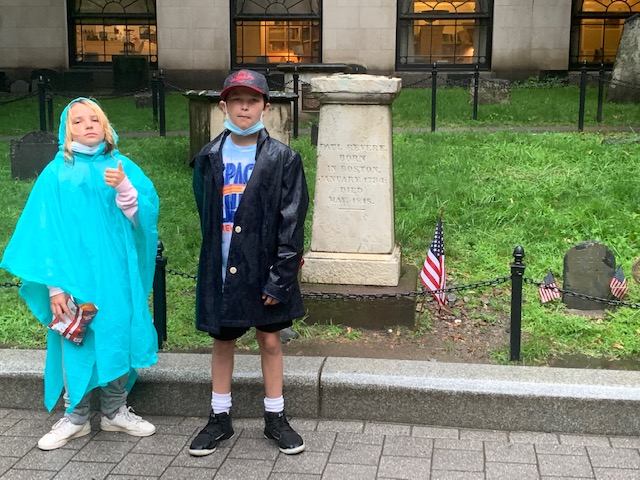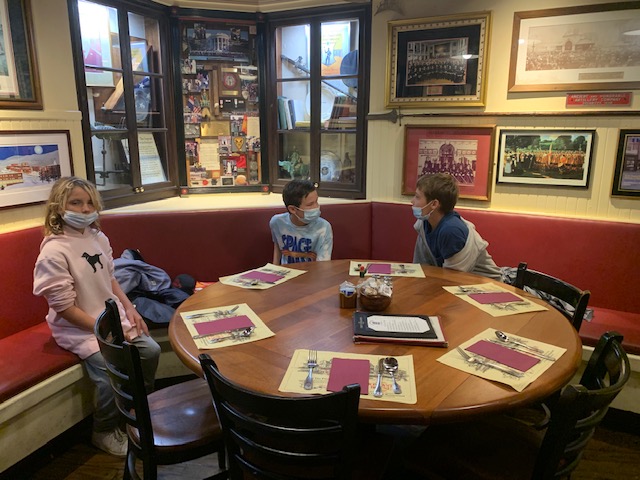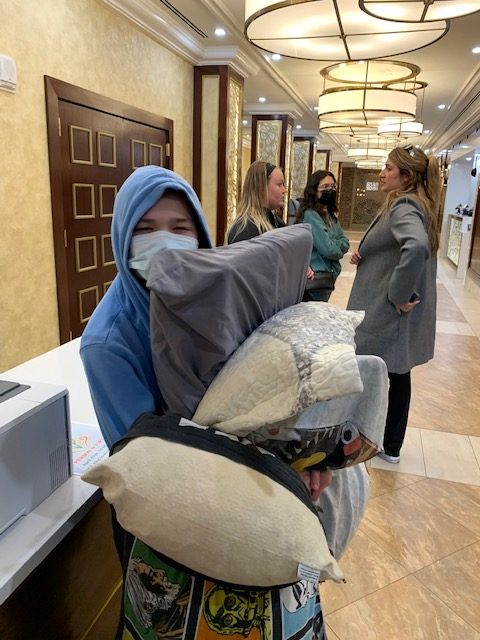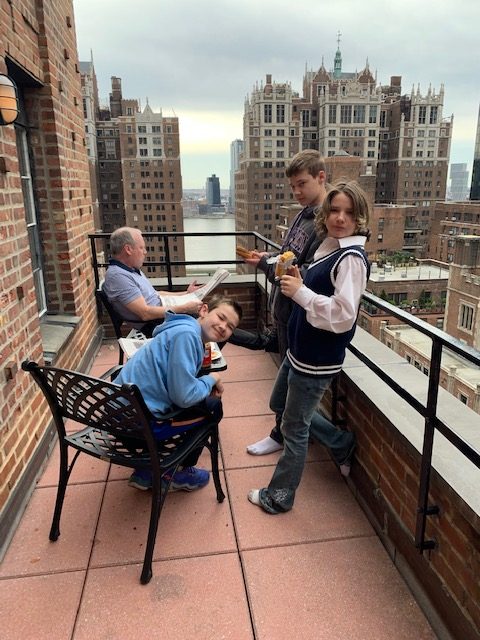9 tips to help your neurodiverse family strike the right balance between go-time and downtime
Pre-kids, my husband Tom and I traveled often.
Whenever we had time and money, we took off to see somewhere new. Our vacations were never relaxing.
We always took the approach that we were going to see as much as possible in case we never got back to that city or country again. We were up with the sun and out the door shortly after, touring all day and falling into bed at night, then repeating the same schedule the next day.
We would jokingly refer to each trip we took as our forced march around (fill in the name of wherever we’d been). Invariably, by the end, we’d had such a terrific time, or we’d missed things we really wanted to see, and we would vow we were definitely coming back.
Then finally, after 10 years of forced marches, we were thrilled to have Jeffrey, our incredibly sweet boy with enormous amounts of energy. All-day energy. And much-of-the-night energy.
We figured we’d just keep on traveling the way that we always had. Then our other kids – Jack and Emma came along in short order, and, in less than four years, our compact family of two had become a chaotic family of five.
We entered a scary phase of seizures, and an epilepsy diagnosis, for one of the kids, and didn’t have the will to go much beyond driving distance. Eventually, with medicine and time, we were fortunate enough to be able to get the seizures under control, and we decided to venture further into the world again.
We thought we’d start out with relaxing vacations – much-needed downtime for us, the parents, but our kids had other ideas. Downtime meant disagreements, bouncing off the walls, and even destruction of each other’s toys, computer keyboards, you name it.
So, we reverted to the forced march approach, since that was what we knew. But that didn’t work either – the kids could hang most of the time, but it was often brutal on my husband and me. Clearly, our old ways of traveling weren’t working for our family.
We realized that traveling with our neurodiverse family meant striking a somewhat delicate balance of go-time and downtime, and we needed to recognize when we were moving toward imbalance and course correct. Here are 9 things we’ve learned along the way…
1. Plans are always in pencil, but deviations can be fun. In Barcelona, our plans (and tickets) to see the famous La Sagrada Familia had to be shelved for some of us when motion sickness brought down one kid and most of us wound up hanging back and watching a marathon of emergency veteranarian television show episodes that we really enjoyed and wouldn’t have seen in the U.S.
2. Sometimes it’s best to divide and conquer, if at all possible. This has become a go-to strategy for us, and the first time I remember using it was in Seattle, WA, where our boys were excited about going on a Duck Boat, and our baby girl was ready to take a nap. We split up, and the outcome was good for everyone.

5. With the right gear, bad weather doesn’t have to be a killjoy. From London to Boston, I’ve been surprised and impressed by our kids’ abilities to withstand bad weather. Our kids have needed breaks and more indoor activity as bad weather persevered but with ponchos and umbrellas, they’ve soldiered on and remember the interesting sites above the weather.
3. Adult-sized excursions often don’t work for kids. While in Italy on a Disney Cruise, we figured a most-of-the-day excursion would be fine, since there would be downtime on the bus, and everything Disney must be great for kids, right? By the time we got to our final stop – Pisa, we could see the leaning tower in the distance, but one of our neurodiverse kiddos was showing us a different site – the beginning of an epic meltdown. We grabbed a cab and headed back to the familiar surroundings of the cruise cabin.
6. Long lunches, or early dinners, can make the day memorable for the right reasons. In Nice, we had a slow lunch in a cavernous cellar and we all remember it as one of the best days on a multi-week trip. The same was true in Philadelphia, PA, Windsor, England, Boston MA and other places we’ve traveled. Taking a break over a meal, talking about what we’ve seen, and getting back to it when the whole group is ready can be good for everyone.

4. Build in time – especially part way through the trip – where fast and slow are possible. On a trip to California, LA and Disneyland had been fast-paced, and our resort in San Diego was just the right level of lots-to-do and go-slow activities, like swimming, strolling, sitting around the fire pit on the beach.
7. Ask for, and accept help. Disneyworld taught us this lesson and I will never forget it. Three hours into our visit to the park, nothing was working. Lines were long, our phones were almost dead from trying to use energy-sapping apps to access rides, and plying the kids with food was no longer working – they were even turning down ice cream. The fond memories I had of Disney as a kid were not being re-created for my kids. Enter Disney’s guest services desk representatives, who turned EVERYTHING around for us – from helping us with Fast Passes and other expediting services for families that have people living with disabilities, to directing us to where nearby we could get portable charges. They single-handedly changed the course of our park visit for the better.

8. Ensuring a decent sleep situation is imperative. From West Virginia to Penne, Italy, we’ve learned this one the hard way. However we do it, we have to put ourselves in a situation for adequate sleep. And that means enough beds, darkness, quiet, HVAC, and time to dial down – plus, if all else fails, maybe a little Melatonin. Sometimes we even take day flights and miss out on time at our destination, so that we can ensure decent sleep from the start of the trip. We can all handle more challenging situations, and have more fun, if we’ve slept.

9. Cut the adult itinerary in half. Then consider cutting more. Despite everything I’ve learned along the way, I can still do better. I tried to strike the right balance on a recent trip to New York City, but honestly, I scheduled us to do too much (See below itinerary). What Jeffrey remembers is, NYC is really crowded and loud. Emma remembers it as “a little too busy.” Jack remembers Hamilton. Hamilton WAS great, but those three impressions are not exactly what we were going for. Tom and I remember it as an amazing trip, but if I had to do it over, I’d probably cut out one major thing each day.
How are you striking the right balance – what works for you? What hasn’t worked? I would love to hear it!



1 Comment
Pingback: Book Review: Traveling Different – Vacation Strategies for Parents of the Anxious, the Inflexible, and the Neurodiverse, by Dawn M. Barclay – Rocket Around